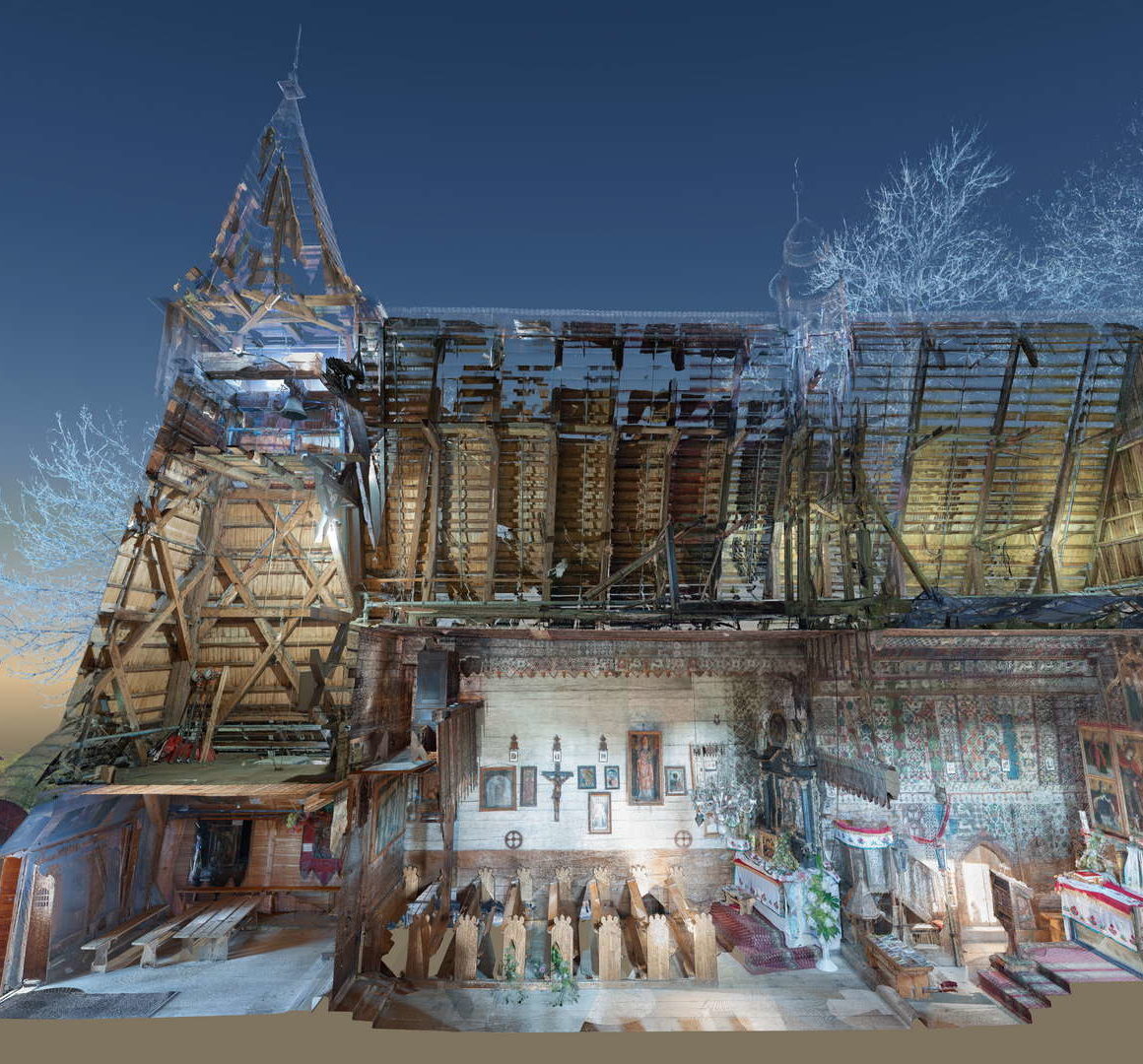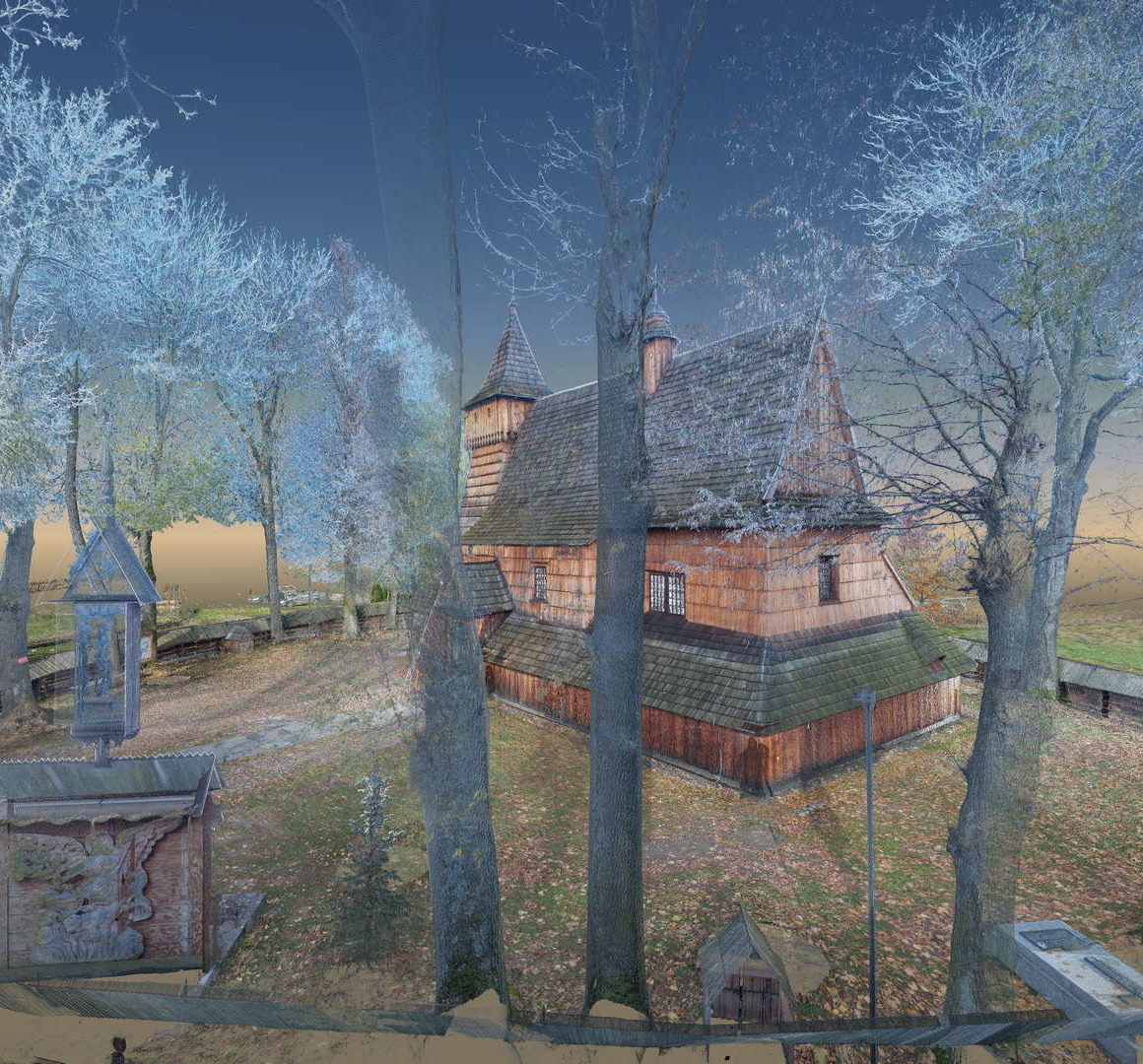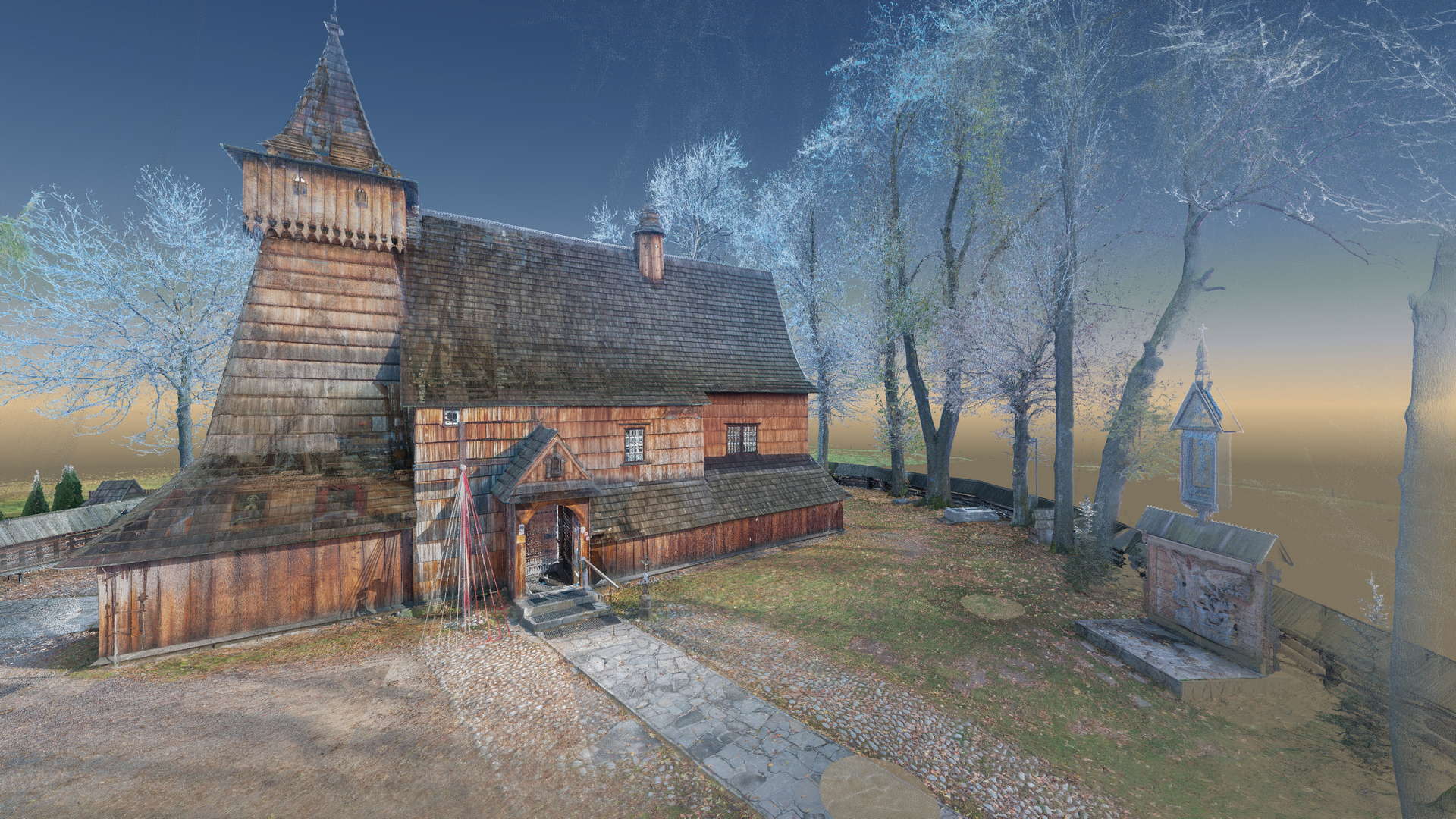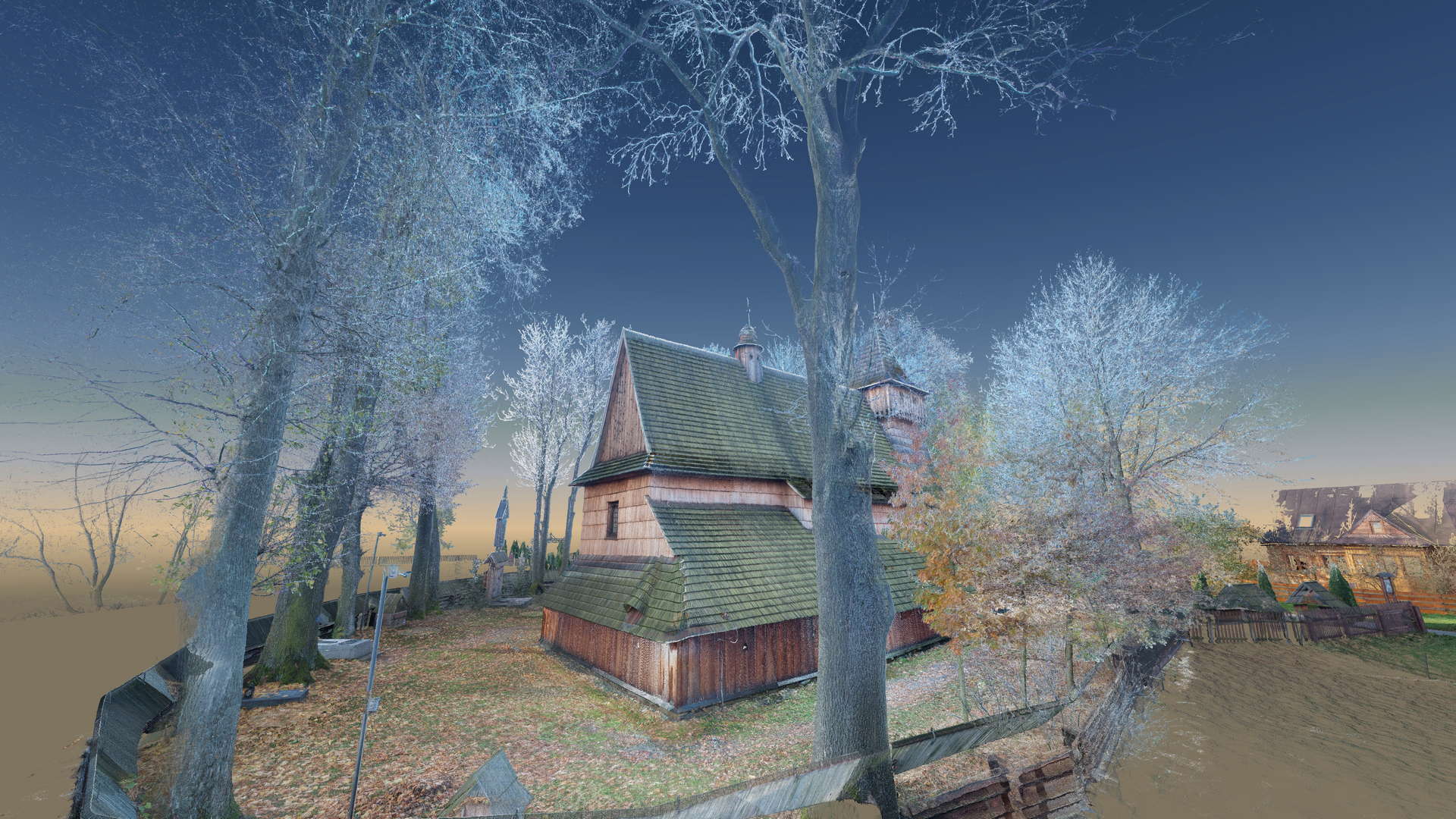Dębno – St. Michael the Archangel Church
The first references to the parish in Dębno appeared in the first half of the 14th century, although the present wooden temple was built in the second half of the 15th century. It is a late-Gothic wooden church, oriented with the chancel facing east. It was built of larch and fir wood, using a log construction (where the logs are stacked horizontally, with their ends interlocked with notches and such buildings were erected without the use of nails). A belfry tower (with an over-hanging substructure that houses bells) was added at the west end of the church at the beginning of the 17th century: it is described in the protocol of visitation from 1607-1608, and there is an inscription on the lintel that seems to bear the date ‘1601’. The inscription also used to contain the name of the tower’s builder but, unfortunately, this part is illegible today. At that time, the church was under royal patronage.
On the outside, the church is covered with wooden panels. The church consists of a nave and a chancel, which is narrower than the nave but is the same height (they are both covered by one roof). On the roof, where the nave turns into the chancel, there is a small turret: the so-called ridge turret. The western portal and the entrance to the sacristy are crowned with a pointed arch, and the southern portal with an inflexed arch. The southern entrance to the church leads through a porch built in the 19th century. Around the church, there are roofed arcades, called soboty (“Saturdays”), erected at the turn of the 18th and 19th centuries. In 2003, the church was added to the UNESCO World Heritage List.
Fun fact – the old days of Dębno
Dębno was probably one of the settlements founded in the 13th century by the Cistercians who settled in Ludźmierz in 1234 (however, they quickly left it and moved to Szczyrzyc). The Cistercians possibly also founded the original parish in Dębno. The first mention of the church and the parish priest, however, comes from 1335, when the brothers Piotr, Marcin and Jerzy Lesicki granted their hereditary estate in Dębno to Urban of Grywałd. In 1400, Pope Boniface IX ordered the appointment of Paul, the canon of St. Margaret’s Monastery in Libichowa, as parish priest in Dębno.
The Monastery in Libichowa (now Trzciana) belonged to the Canons Regular of Penance, who were called “Marks” (after their mother church in Kraków dedicated to St. Mark). However, according to Jan Długosz, around 1480, the parish in Dębno was associated with the abbey in Szczyrzyc, but the link disappeared over time. Interestingly, according to local legend, the present church (from the end of the 15th century) was built not by monks, but by… robbers who had a vision of St. Michael, the patron saint of the temple, on an oak tree.
Fun fact: Jánosík’s wedding
Folk tales about the robber Jánosík, written down by Jan Kasprowicz, were published in the 18th volume of his works, entitled “Mój świat” (“My World”, 1930). It also contains the information that Jánosík built the church in Dębno. Meanwhile, it is this church where the TV show character Jánosík (played by Marek Perepeczko) married his beloved Maryna in a famous Polish TV series from 1973 called Jánosík, which
was directed by Jerzy Passendorfer. The outdoor shots, however, showed another sacred building as the place of the robber’s wedding, namely the St. John the Baptist Chapel in Chochołowska Valley. Contrary to popular belief, the chapel was not built for the TV series, but was erected in the 1950s.
Video:








